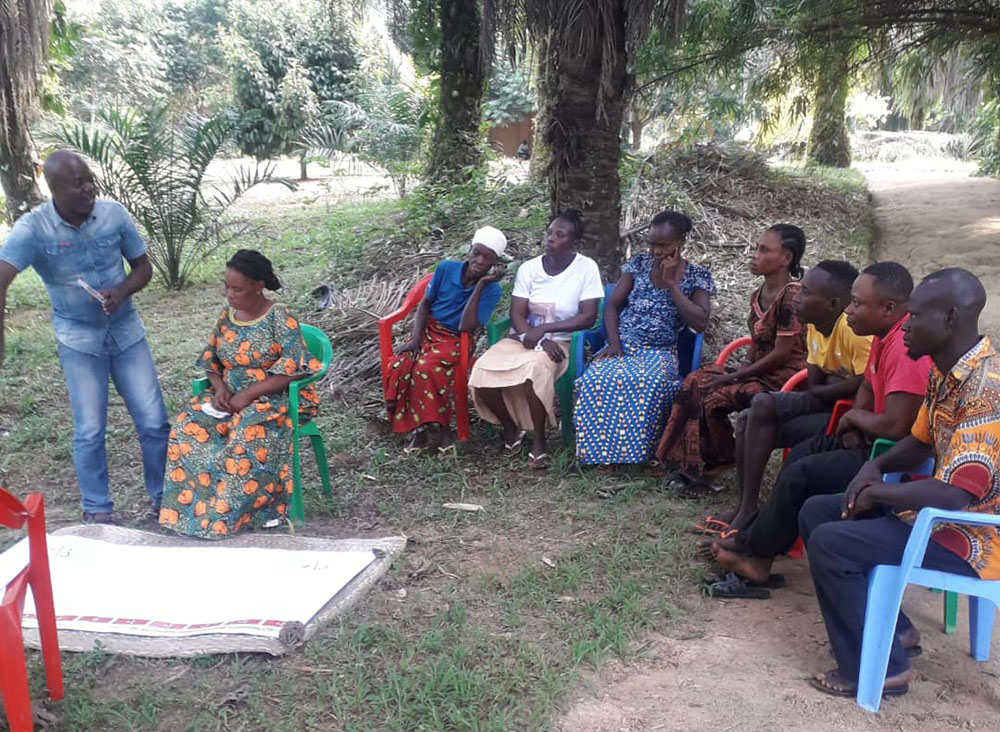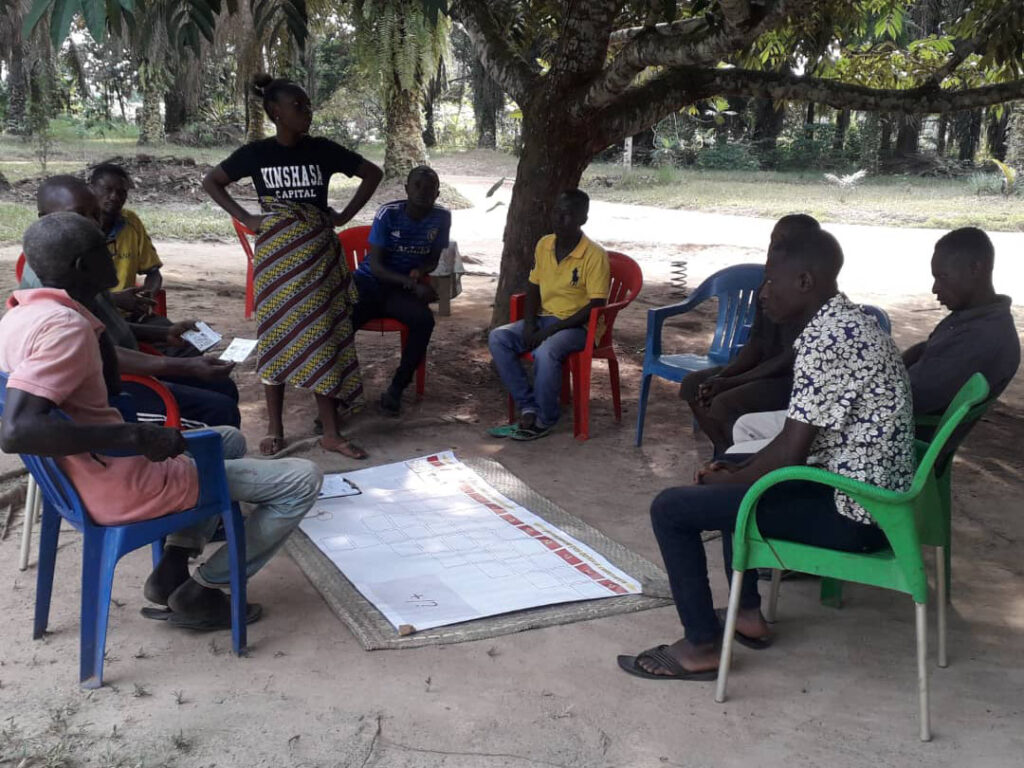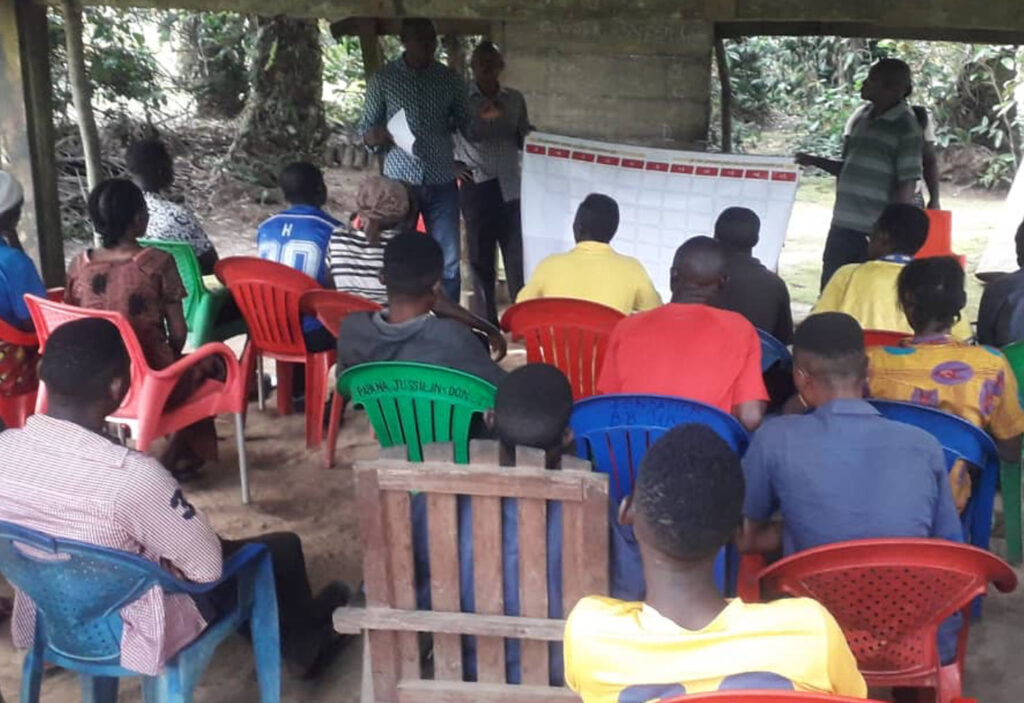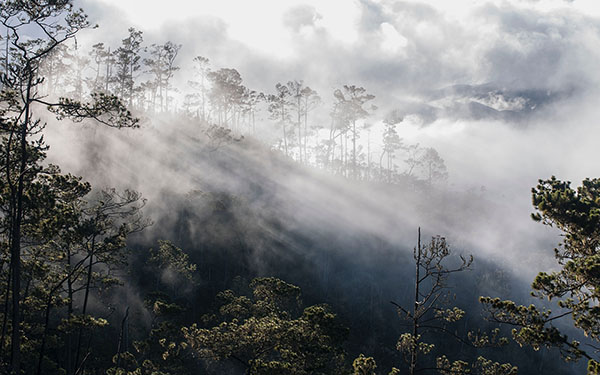
Équateur Province, Democratic Republic of Congo
The forests of the Congo Basin are essential to the future wellbeing of the country
The Democratic Republic of Congo (DRC) is in the heart of Africa's dense equatorial rainforest massif. The DRC hosts approximately half the continent's rainforest. The vast majority of the DRC’s forests are old-growth primary forest, and the country is home to the second largest national tropical forest in the world. Natural forests in the DRC cover approximately 145 million hectares, or 67% of the national territory.
Projet Équateur aims to conserve forests, improve livelihoods and promote sustainable development in the DRC. Putting science in to practice, we engage with policy and management structures to test novel community centred approaches to combat deforestation and develop models for a “Green Economy”.
Woodwell Climate Research Center
The Woodwell Climate Research Center is a leading source of climate science that drives the urgent action needed to solve the climate crisis. More about Woodwell Climate Research Center.What's at stake
Of the DRC’s 2.35 million km2, more than half is forest. It accounts for 35% of the above ground carbon in woody biomass in sub-Saharan Africa.
Economic growth, poverty alleviation and food security are the national priorities. Farming, generates just 40% but employs 70% of the workforce.
The majority of farming in the DRC is shifting (slash and burn) agriculture; the principal driver of primary forest loss and key management challenge within industrial land concessions.
Ambiguous land rights, weak governance institutions and limited organisational capacity, create critical impediments to mobilizing technical and market-based solutions to achieve sustainable landscape management and livelihoods improvements.
Congo River basin forests
The Congo Basin has the largest contiguous area of tropical forest outside of the Amazon, and 70% of the Congo basin forest area is within the Democratic Republic of Congo (DRC). The majority of DRCs forest cover is primary forest (estimated at around 105 million Ha in 2000), with 60% classified as within ‘intact forest landscapes’.
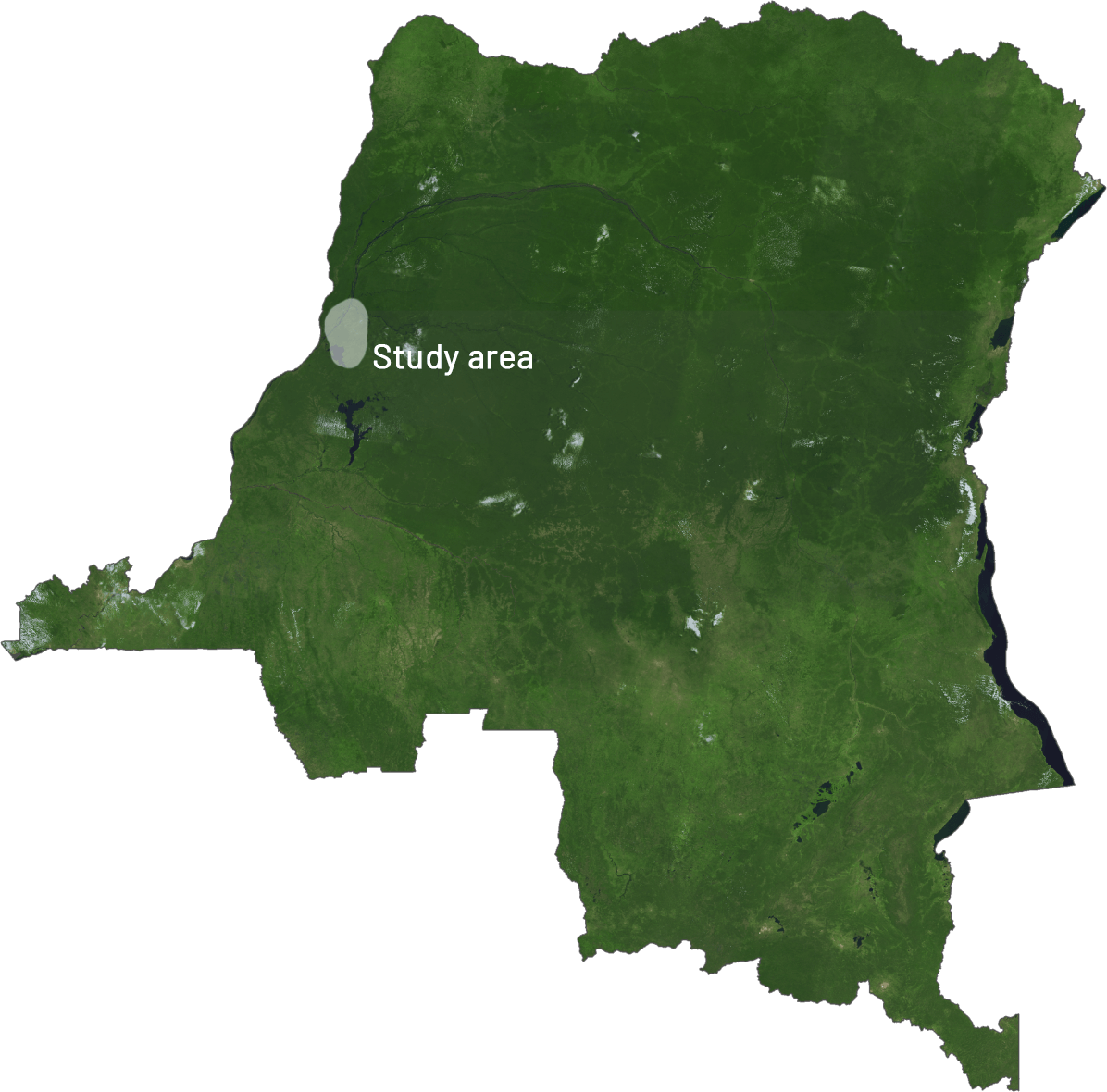
These forests provide essential ecosystem services for the whole region. They provide essential water regulation services that maintain the Congo River, which is a source of food, water and other social, cultural an economic services for an estimated 77 million people. The forests also provide valuable non-timber forest products for the local populations and they could be the basis of a green economy.
From a global perspective, the forests of the DRC result in the country being a significant net absorber of carbon. The forests were estimated to remove 337 MtCO₂e/year (million tonnes of CO2 equivalents per year) between 2001 and 2020, while the DRC emits only around 3-4 Mt CO₂/year, 0.01% of the world’s total.
The DRC has a historically relatively low deforestation level when compared to other tropical forested nations. However, given the large area of forest, the total area of deforestation is large in actual terms. Between 2001 to 2020, the Democratic Republic of the Congo lost 15.9 Mha of tree cover, equivalent to a 8.0% decrease in tree cover and and 9.71 Gt of CO₂e emissions. Increased development and political stability is very likely to increase threats to the forest, while the forests themselves could be the basis of a green economy.
Why is the DRC's forest so important?
| Primary forest area | Approximately 145 million hectares, 67% of the national territory and second largest national tropical forest in the world. |
| Keystone faunal species | Mountain gorilla, bonobo, African forest elephant, leopard, bongo, giant forest hog. |
| Supporting indigenous groups / local people | Gathering firewood, building materials and non-timber forest products, making charcoal and hunting. |
| Threats | Demands by the people for their basic economic development and security, growing human populations, forest fragmentation. |
Threats
Despite well-conceived and aligned policies on biodiversity conservation, forest management, climate change and sustainable economic growth, enabling landscape-level conservation and sustainable management of primary forests in the DRC is difficult.
The DRC has a legacy of chronic insecurity, internal displacement and weak governance, which has an impact on the long-term integrity and management of its forests. More than 26m ha of forest is in protected areas but trees and wildlife in these regions remain under continued threat from hunting, mining and encroachment.
Outside of protected areas, the biggest threat to the DRC’s forests is from small-scale subsistence activities and slash and burn agriculture, both of which are closely tied to relieving local poverty. Forests are used for gathering fuelwood, building materials and non-timber forest products, making charcoal and hunting.
Many forests, although remote, have already become 'empty forests' - largely devoid of large animals as a result of unsustainable hunting. Slash and burn agriculture, meanwhile, typically results in a permanent loss of primary forest: once land is cleared for cultivation it is usually only returned to a secondary forest state through a fallowing system that allows the ground to rest for 7–15 years; it is seldom allowed to return to mature natural forest cover.


Solutions and responses
Government devolution
In recent years both biodiversity and sustainable development policies in the DRC have become increasingly devolved toward local enforcement of jurisdictional and community resource rights. This change to community-based forestry and conservation is encouraging, as shifting cultivation – the predominant driver of deforestation – is determined by the poverty conditions of rural households, which in turn directly influence and are affected by the political and institutional structures of forest governance.
However, the success of this approach hinges on local community empowerment and participation, not just as passive beneficiaries of policy but also as active leaders. The recent adoption of the DRC community forest law, which establishes the concept of “local community forests”, is an important step in the right direction, but not without challenges in terms of harnessing benefits for local communities.
Education on sustainable development
Education on sustainable development practices, at scale, could dramatically accelerate the engagement of local communities in effective forest governance, and resolve the country’s technical and organizational capacity crisis.
However, a rare empirical assessment in 2018 highlighted the gap between accepted knowledge on best practices in sustainable development and student knowledge in the DRC.
Teaching staff face numerous challenges in rectifying knowledge gaps and capacity deficits, including their own, due to lack of financial, material and information resources.The challenge now is to mobilise resources for education training and capacity building.
Without a steady stream of well-trained, tertiary-educated, vocationally orientated graduates, the capacity to implement complex rural development programmes in the DRC will remain weak. There have recently been significant commitments to increase levels of funding for rural development; however, there are presently not enough adequately trained individuals to manage these funds productively.
Sustainable development practices will therefore not become operational norms unless there is a serious overhaul of the broader tertiary education system, both in terms of theoretical approaches, such as curriculum design, and practice, including tertiary education management and access to information resources and networks.
National policy
Over the last decade, the organisation and discipline of the policy, regulatory and management frameworks for primary forest protection and management have received much attention in the DRC, and these continue to be actively developed. Critical changes in national conceptions of the role of local communities have aligned sustainable development with forest conservation and stretched the concept of conservation beyond the confines of traditional protected areas.
However, net zero deforestation by 2030 will not be attainable unless we systematically and rapidly address the capacity deficits of training institutions. Without support, they will be unable to meet the demands of current and future sustainable development objectives and the need for well-trained environmental professionals who can promote community-based forestry and conservation.
Up-scaling action
Projet Équateur will generate a paradigm shift in public-private partnerships for primary forest landscape conservation and management, where industrial land concession operators invest in community enterprises alongside public funds that provide funding for training and strengthening institutions.


